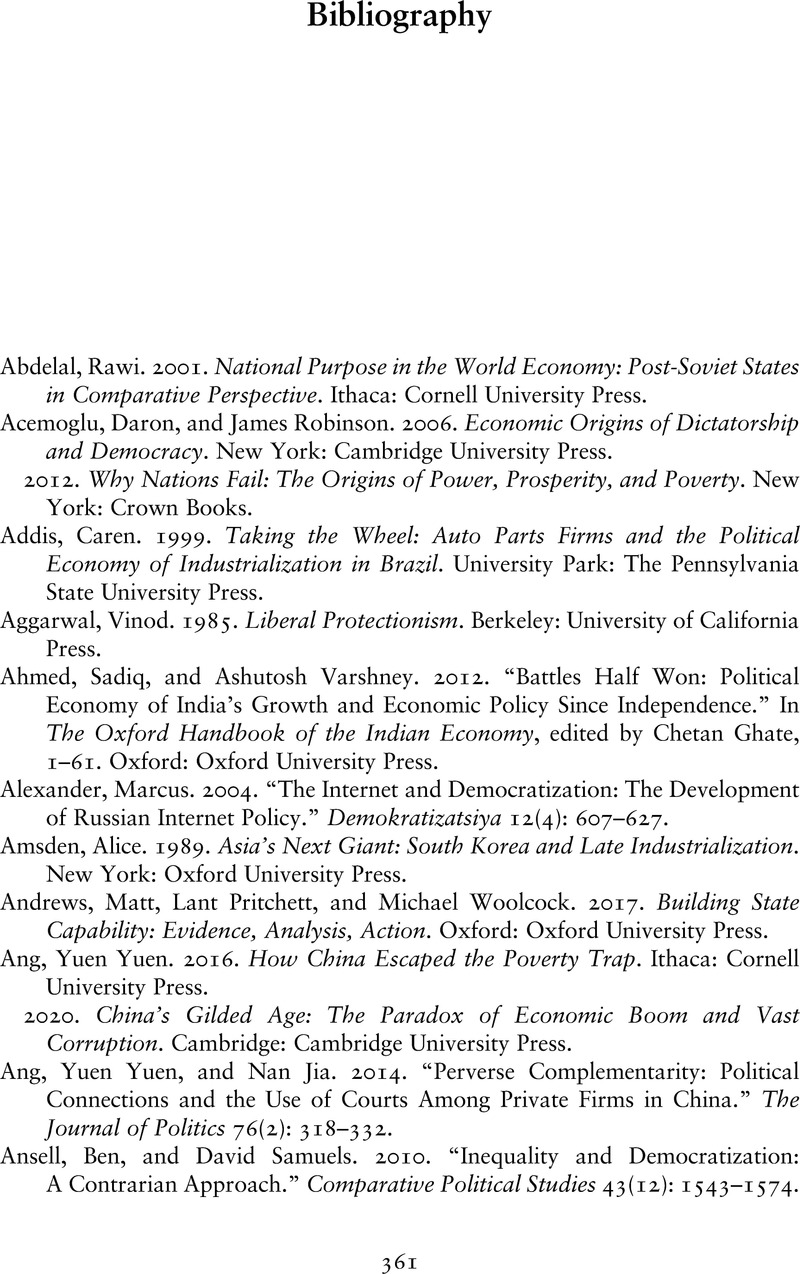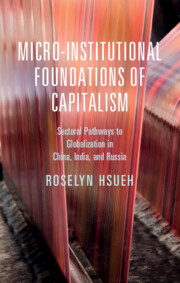Book contents
- Micro-institutional Foundations of Capitalism
- Micro-institutional Foundations of Capitalism
- Copyright page
- Dedication
- Contents
- Figures
- Tables
- Acknowledgments
- Part I Politics of Market Governance
- Part II Nations and Sectors: Patterns of Market Governance
- Part III National Configurations of Sectoral Models
- Bibliography
- Index
- References
Bibliography
Published online by Cambridge University Press: 16 June 2022
- Micro-institutional Foundations of Capitalism
- Micro-institutional Foundations of Capitalism
- Copyright page
- Dedication
- Contents
- Figures
- Tables
- Acknowledgments
- Part I Politics of Market Governance
- Part II Nations and Sectors: Patterns of Market Governance
- Part III National Configurations of Sectoral Models
- Bibliography
- Index
- References
Summary

- Type
- Chapter
- Information
- Micro-institutional Foundations of Capitalism , pp. 361 - 386Publisher: Cambridge University PressPrint publication year: 2022



